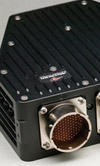Chip crazy
 The silicon chip has made the task of performance engine design incomparably easier. An effective revolution in engine design for both gasoline and diesel units was made possible by close control of fuel and ignition through what were and are rugged on-board computers.
The silicon chip has made the task of performance engine design incomparably easier. An effective revolution in engine design for both gasoline and diesel units was made possible by close control of fuel and ignition through what were and are rugged on-board computers.
For the first decades of engine development, the performance characteristics of the engine were set through the original design: valvetrains, carburation, ignition timing and their relationship to engine revs were the tools that were used to optimise engine performance.
It owed as much to art as science in many cases and laid the foundation of reputations won and lost.
The ability to change the engine parameters to suit varying conditions makes the modern i.c. engine what it is. Typically, an ECU will contain an engine ‘map’: that is, set points for ignition and fuel timing that have been determined on a dyno to provide maximum efficiency within the operating contours of the map. In race applications, this degree of control extends to transmission behaviour. During the development of modern race engines, control of the engine’s parameters could be set remotely by engineers reading the telemetry outputs of the engine.
The modern ecu certainly has the capacity to manage far more than ignition and fuel. Valvetrains operating independently of camshafts will allow a gasoline engine to avoid throttling losses and to optimise gas flow velocities. Real time analysis of exhaust gases will allow engine parameters, including intake air chemistry, to be continually adjusted to meet the key factor in good combustion, that of completing necessary pre-combustion chemistry in a timely manner.
One of the tragedies of the current trend to allow rules to be set by technical illiterates who treat motor racing (both four and two-wheeled) as entertainment is that standard ecus are used and the forefront developments of engine work now inevitably move away from racing. A simple example has been traction control: an engine is entirely capable of being its own traction controller. By knowing the maximum wheelspin limited acceleration in each gear, the engine developer can calculate the maximum reduction in time between the ignition/fuel point and that immediately following. By setting that reduction as the maximum, an engine can softly limit wheelspin.
Clever use of ecus allowed good engineers to provide traction control without the crude systems that became outlawed. Instead of applauding the ingenuity, standard ecus were introduced removing the premium on the engine designer’s creativity. The speed and capacity of ecus used in road cars is extraordinary and in many respects in advance of what is genuinely useful. The drawback in many cases is the necessity to collect information in adverse environments and to that extent the ecu relies on advances in sensor technology. Ride-handling compromise control is well within the mapping capability of an ecu, but the limits and much of the expense lies in the provision of the necessary sensors and their incorporation into components.
Written by David Macdonald.